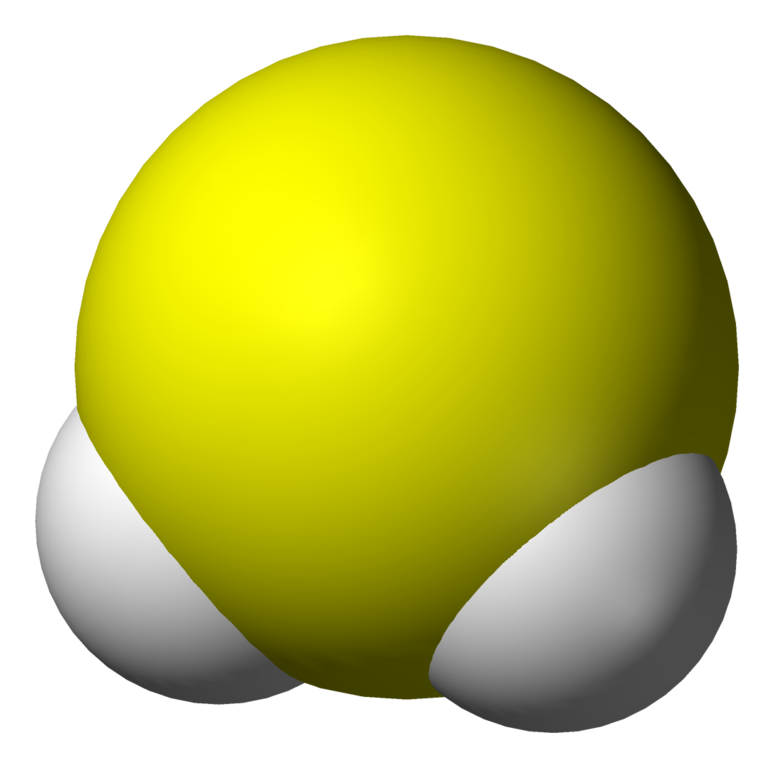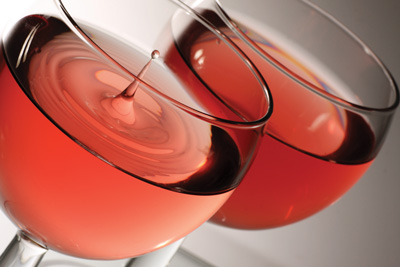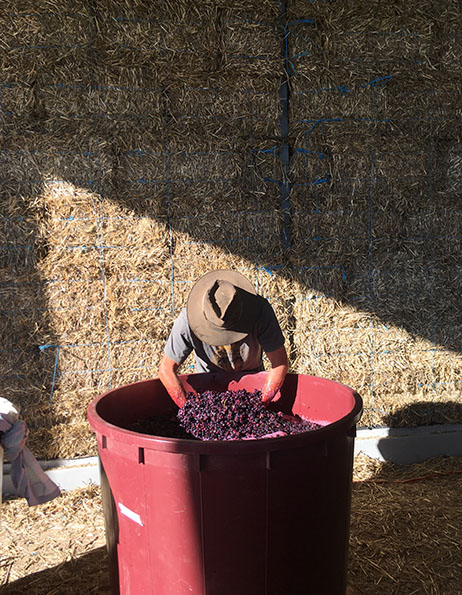
Selecting a yeast strain is one of the most consequential decisions a home winemaker can undertake. Yeast suppliers provide tables and charts of characteristics like alcohol tolerance, influence on varietal character, speed of fermentation, suitable temperature range, nitrogen nutritional needs, and other variables. Among the routine yeast choices, though, are also found yeasts that have been selected and grown to address very specific conditions or problems. When a winemaker anticipates such a situation, that special purpose may override ordinary yeast selection considerations. Conditions like the risk of hydrogen sulfide (rotten egg stink) development, enhancing aromas, tolerating high alcohol, helping assure malolactic fermentation success, or even completing part of the malolactic conversion through yeast metabolism can shape the selection process. While there is academic research on genetic modification of yeast strains for specific purposes, genetically modified organisms (GMOs) do not have good market acceptance among winemakers. Consequently, all of the strains discussed here are either selected from nature or hybridized from natural stocks through conventional breeding techniques.
Sulfur-Specific Yeast
Some yeast strains and some grape varieties have long been viewed as riskier for the development of off odors from volatile reduced sulfur (VRS) compounds like hydrogen sulfide. While it is prudent to head off such problems in any fermentation by applying adequate nutrition and avoiding yeast stress, there are now strains available that virtually guarantee no sulfide-related odors. For most of these strains, yeast producers have cross-bred conventional wine yeasts with other natural strains that have been identified as producing little or no VRS, even under stressful conditions. Selections are mostly available to commercial winemakers in 500 g and 10 kg packs, but increasingly home winemaking shops are bringing these products to market in hobby-size packages. The yeast producer Renaissance Yeast provides several strains that it describes as “H2S preventing” including Viva, Allegro, Avante, and Muse. Developed by highly regarded enology researcher Linda Bisson at UC-Davis, the products are manufactured and marketed in a partnership with Renaissance Biosciences of Vancouver, BC. On the other side of the Atlantic, major wine yeast producer Lallemand worked with INRA, SuperAgro Montpellier, and the ICV to develop Sensy™, a strain they describe as producing no H2S during fermentation. It is particularly recommended for aromatic white wine and rosé production and is malolactic-friendly (discussed further later). For winemakers facing a possible VRS problem —high sulfur use in the vineyard due to humid growing conditions, cold fermentation due to limited temperature control, or experience with a grape source that previously caused problems—one of these new special purpose strains may be the answer.
Aroma-Specific Yeast
Those same aromatic whites and rosés can be enhanced with other special purpose yeasts, even when VRS production is not expected to be an issue. Some grape varieties, such as Sauvignon Blanc and Gewürztraminer, are known to contain other sulfur-based compounds known as thiols that produce characteristic grassy and floral aromas. In the grape, these compounds and their precursors are often bound to sugar molecules in non-aromatic form. To be released, the fermentation must cleave the compound free of its sugar bond using various enzymes. Producers have recognized that some strains of conventional wine yeast Saccharomyces cerevisiae are rich in production of those enzymes and therefore are well able to enhance the aroma profile of the finished wine. Yeast strains selected for those reasons include Enartis Ferm Q9, Enartis Ferm Aroma White, Lalvin QA23, and Lalvin CY3079, as well as those like the Sensy™ listed earlier.
Among the routine yeast choices, though, are also found yeasts that have been selected and grown to address very specific conditions or problems.
For a different approach to enhancing aromas, yeast producers have looked to mimick the best effects of wild or feral fermentations, without taking on the risks of just leaving things to nature. That has led to combining in a single product Saccharomyces and non-Saccharomyces strains of yeast to provide more complexity in the production of aromatic esters. Melody™ is one such product, produced by Chr. Hansen. It is 60% Saccharomyces cerevisiae, 20% Torulaspora delbrueckii, and 20% Lachancea thermotolerans. For highly aromatic varieties like Gewürztraminer or Sauvignon Blanc, the home winemaker might want to select an aroma-releasing yeast strain. For a more neutral grape like Chardonnay, one of the mixed-strain ester-producing products might be a more exciting choice.
Alcohol-Tolerant Yeast
High sugar musts, above about 26 °Brix, offer a variety of challenges to the winemaker. Because high sugar leads to high alcohol, the yeast may suffer from alcohol toxicity and stall. If that does happen, any yeast strain used to restart the fermentation will need to be much more alcohol tolerant than the one that quit. As sugar levels decline and alcohol levels rise, it is the yeast cell membrane that protects against toxic effects and helps the cell retain viability. Although cell membrane biochemistry is intensively studied, it remains unclear exactly what characteristics are conferring higher alcohol tolerance. Instead, yeast producers test naturally isolated strains under various conditions and work with those that show good alcohol tolerance. While many of these are Saccharomyces cerevisiae, producers have found others of Saccharomyces bayanus effective in high-alcohol fermentations. One of the latter is Uvaferm 43 from Lallemand, recommended for high-sugar musts and for restarts with an alcohol tolerance over 18% alcohol by volume (ABV). Lalvin EC1118 Prise de Mousse is another bayanus from the same producer that is also alcohol tolerant. Red Star produces Pasteur Blanc, rated to 18% and Enartis has their Enartis Ferm D20.
Malolactic Considerations
Some white wines (notably Chardonnay) and most red wines undergo malolactic fermentation (MLF) as part of their development. Even with careful inoculation with malic acid metabolizing lactic acid bacteria (LAB) and proper temperature control, however, MLF does not always proceed smoothly and quickly. Some of the inhibitory factors that slow or prevent MLF are produced by Saccharomyces yeasts. Ethanol itself is inhibitory, as is sulfur dioxide, which is in the must to start with and produced by the yeast during fermentation. LAB are also more fastidious feeders than yeasts, so the consumption of key nutrients during primary fermentation may make MLF more difficult (MLF-specific nutrients can help with that). All of those factors, however, do not account for all of the inhibitory effects observed when researchers study MLF. There is evidence that toxic yeast metabolites (fermentation byproducts) may interfere with the growth of LAB. Most prominent among these are medium chain length fatty acids, with the degree of inhibition related to chain length and the concentration of the compounds. Other suggested LAB toxics include various antibacterial peptides and proteins that are naturally produced by the yeast. Production of ethanol, sulfite, fatty acids, peptides, and proteins vary from yeast strain to yeast strain. This means you should look to the yeast producer for guidance on whether the strain you would like to use is “MLF friendly.” Producers have different ways of flagging this data. In an online chart, Lallemand lists terms for each strain ranging from “inhibiting” for Lalvin ICV Opale™, through “not really recommended” for Lalvin BM45, up to “recommended” for Enoferm CSM and Lalvin DV10, and “strongly recommended” for Enoferm AMH and Lalvin 71B. In a yeast strain chart in his book Techniques in Home Winemaking, Daniel Pambianchi lists compatibility of yeast with MLF as “more,” “less,” or “not recommended.” Among Red Star yeasts, for instance, Pasteur Red is more compatible, Premier Cuvée is less compatible, and Côte des Blancs is not recommended. If MLF is important to you, consider this information when selecting a yeast strain.
Going further than MLF compatibility, some situations may warrant reducing the concentration of malic acid during primary fermentation. Particularly in cold climates, grapes may be too acidic at harvest to produce a balanced wine. If the intended wine is a fresh-tasting white or rosé, a conventional LAB MLF may produce an undesirable flavor or aroma profile. Fortunately, yeast producers have identified some strains of Saccharomyces cerevisiae and S. bayanus that partially metabolize the malic acid in must. Lallemand product literature states that Lalvin 71B partially metabolizes malic acid, Lalvin C metabolizes up to 45% of the malic acid, and Uvaferm SVG metabolizes roughly 25%. While these are far below the near 100% of a complete MLF by LAB, the fresher flavor profile may be enough for a particular wine.
Of course, home winemakers already have many variables to consider when selecting a yeast strain, but you now can focus even more closely on specific conditions or potential problems in order to factor those into the choice, too.






